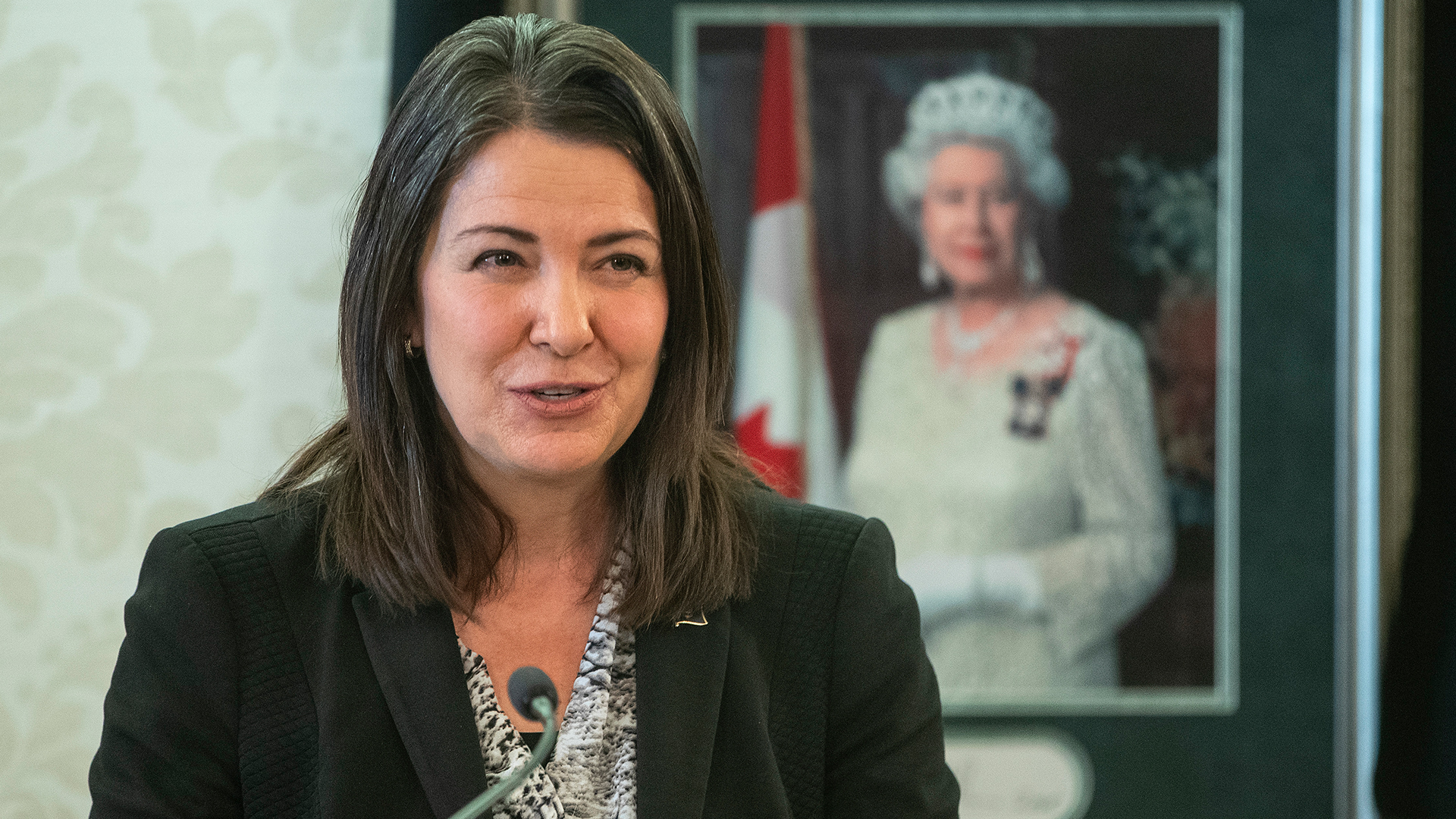
Danielle Smith has now been sworn in as the premier of Alberta. Among the ideas she has put forward in the last few months – and which she is now poised to implement – her proposed Alberta Sovereignty Act has garnered the most attention from supporters and critics alike. But is it constitutional? The answer to that question depends on what the proposal entails.
The specific details of the proposed legislation remain unknown at this time. However, one can deduce some of its mechanics by looking at the document from which it emanates, the Free Alberta Strategy – developed by the “independent, libertarian-minded” Alberta Institute and others – as well as Smith’s own comments, including her recent remarks emphasizing that Alberta will abide by Supreme Court decisions.
The Alberta Sovereignty Act is but one piece of a larger whole. Making a distinction between its component parts is crucial because there is no doubt that some aspects of the Free Alberta Strategy would be unconstitutional if adopted. And Smith does not appear to have endorsed the Free Alberta Strategy generally.
For instance, the Free Alberta Strategy includes a proposal to have the Alberta government appoint all future judges to the Court of King’s Bench and the Court of Appeal. While there is nothing inherently problematic with having the executive appoint judges, this is currently not permitted because Section 96 of the Constitution Act, 1867 leaves this task in the hands of the federal executive.
Alberta’s sovereignty act part of a troubling trend in Canadian democracy
Lisa Young: Will Alberta be the buffalo in the federation’s china shop?
To be sure, this state of affairs is far from ideal in a federal state. It is the equivalent of having one side to a contract choosing the judges who will interpret it. Unlike Canada since 1949 – when appeals to the Judicial Committee of the Privy Council in the U.K. were abolished – other federal states possess mechanisms meant to avoid the appearance of bias in federalism disputes, particularly with respect to their highest constitutional courts. This includes formally involving the sub-national entities in the appointment process. The Meech Lake and Charlottetown accords sought to remedy this, but those projects never came to fruition. The provinces have legitimate grievances on this front, but informally modifying the Constitution is not the answer. Respect for the rule of law requires following established pathways of constitutional amendment.
This brings me to a key part of the proposed Sovereignty Act. The Free Alberta Strategy offers the following description of the proposed legislation:
“[It] would provide Alberta’s Legislature with the authority to refuse enforcement of any specific Act of Parliament or federal court ruling that Alberta’s elected body deemed to be a federal intrusion into an area of provincial jurisdiction, or unfairly prejudicial to the interests of Albertans.”
“As an example, Alberta’s elected representatives could trigger the use of this legislation to override a federal attempt to regulate or decline a new energy project in Alberta. Once the provincial permit is granted for such a project, that business would be permitted to build and operate independently of any federal regulatory or judicial interference.”
Smith’s campaign website, which was taken down after she won the leadership, offered the following more specific description:
“A proposed law that would affirm the authority of the Provincial Legislature to refuse provincial enforcement of specific federal laws or policies that violate jurisdictional rights of Alberta under Sections 92-95 of the Constitution or that breaches the Charter Rights of Albertans.”
[…]
“If a Court stays or ultimately deems that the actions by the province under a specific Alberta Sovereignty Act Special Motion is unconstitutional, then the Government and Legislature have to review the Special Motion actions in question and make a decision as to whether or not to amend, end or continue with them, understanding the legal implications such a decision could cause. That decision will be up to the Government and Legislature at the time in question, as each such situation would be unique and case specific.”
While some aspects of this proposal appear to be unconstitutional, it is not clear that all its aspects are constitutionally problematic. A return to first principles is needed to understand why.
As the Supreme Court has explained, the Constitution creates sovereign, co-ordinate orders of government. It bears observing that the court itself has consistently affirmed that the provinces are “not subordinate” to the federal government, contrary to what some have suggested.
We know that federalism was not the preferred choice of some framers, such as Sir John A. Macdonald, who wanted a unitary state. But the delegates from Quebec and the Maritime provinces, which formed part of the initial compact, prevailed. This is confirmed by Lord Carnarvon’s speech to the House of Lords in 1867. Other provinces have been created or joined the union on this same understanding. Indeed, upon its admission to the union, Prime Minister Louis St. Laurent assured Newfoundland and Labrador that it would not lose its distinct identity because each province is “sovereign” and “not a mere administrative unit of the central government.”
More specifically, the text of the Constitution creates a division of executive and legislative authority. This is the essence of Canadian federalism. Accordingly, each province has its own executive and legislative branch. The federal government also has its own executive and legislative branch. The executive branch of each government is accountable to its legislature and can be tasked with executing its laws. It is not required, as a matter of constitutional law, to apply and implement the laws and programs of another order of government.
To be sure, the Supreme Court has derogated from this structure in part by permitting each order of government to seek assistance from the other through consensual administrative inter-delegation. In practice, the provinces often implement federal laws and programs. This is the case, for instance, with the prosecution of criminal offences – a form of consensual inter-delegation expressly permitted by the text of the Constitution. The federal government does the same, as is the case with the work of the Canada Revenue Agency for example.
But the fact that the Supreme Court has permitted this development does not mean that it is required by the Constitution. Indeed, the Supreme Court has never endorsed coercion in this context. It would be a dramatic departure from established constitutional law if it did. It would also be inconsistent with the practice of other countries built on this same model, such as the United States, Australia, Belgium and Brazil, to name but a few. In the United States, for instance, this has led to the creation of “sanctuary cities” to counter certain federal immigration policies.
Danielle Smith: A time for Alberta leadership within the federation
In sum, the federal government has its own executive branch to implement and enforce its laws. The provinces are free to assist in that implementation if they wish. But if they have different enforcement priorities, they have the sovereign right to decline enforcement of federal laws and require the federal government to do so itself, with its own funds.
This can sometimes be a structural protection of liberty. For example, prior to the Supreme Court’s ruling striking down Canada’s abortion laws in 1988, Quebec famously declined to prosecute abortion cases. In a more recent example, Ontario announced that it would decline to criminally prosecute HIV-positive individuals who do not disclose their status to sexual partners if there is no realistic possibility of transmission. The province also asked Parliament to amend the law in this respect. Our constitutional structure permits this result, whether we agree with it or not.
Accordingly, to the extent that the proposed Alberta Sovereignty Act seeks to decline provincial enforcement of federal laws or programs, it is fully constitutional. It would be surprising if it was not. This is so even if the federal laws at issue are deemed to be constitutional by the courts. For instance, if Canada’s abortion laws had remained in place instead of being struck down by the Supreme Court, the provinces would still be under no obligation to investigate and prosecute these offences themselves. This is also in line with the recent steps taken by Alberta, Manitoba, New Brunswick and Saskatchewan with respect to firearms confiscation.
However, to the extent that the proposed legislation seeks to ignore court rulings that render provincial action unconstitutional, it should be rejected. Moreover, the province cannot free a private actor from its obligation to comply with federal laws. It can only limit who will apply the laws and enforce a breach by declining to do so itself.
More recently, Smith and her team have indicated they will “abide by” Supreme Court decisions and ensure the Alberta Sovereignty Act is consistent with “sound constitutional principles.” This suggests that they will accept any court rulings that render provincial action unconstitutional, which is a welcome clarification. But doing so does not affect the premier’s ability to implement her core campaign promise: refusing provincial enforcement of federal laws and programs in certain circumstances, which is wholly constitutional.
It is to be hoped that the new premier will stand by her commitment to ensure constitutional compliance, if she moves forward with this proposal. There is certainly a path for her to do so. Whether this is a good idea or not – and what the rest of the country should do in response – is another matter. But Smith’s election as leader of her party should certainly give the rest of Canada some pause: how can we contribute to alleviating the tensions that exist in order to maintain a united country? We are all better off if we meaningfully engage in this conversation.










